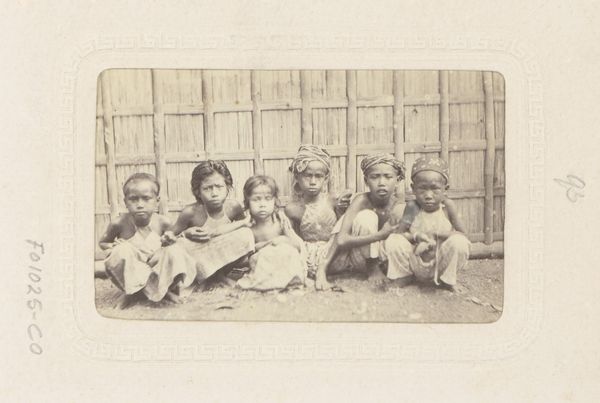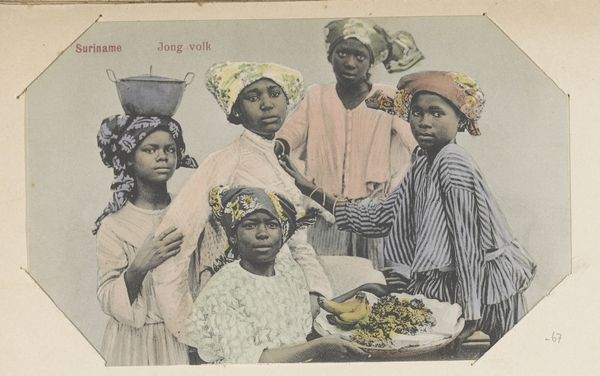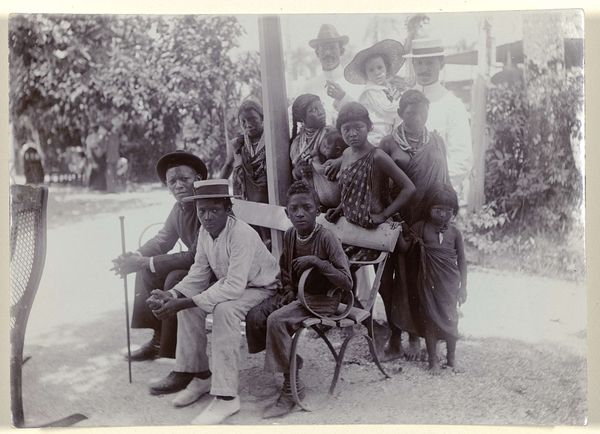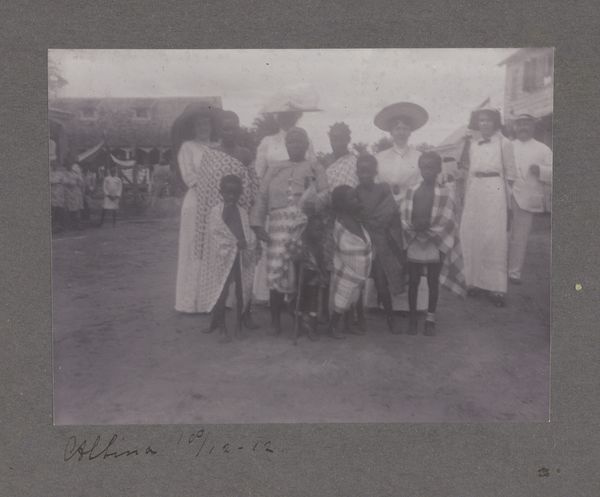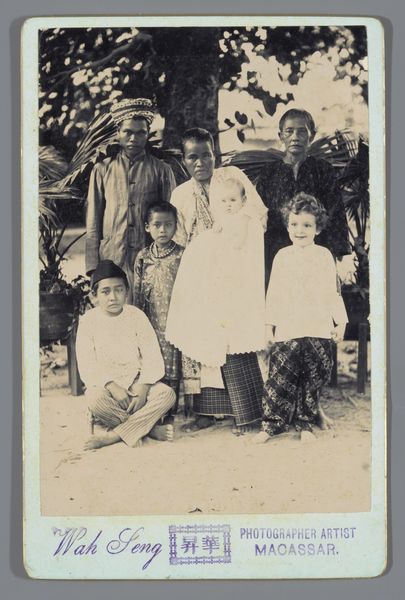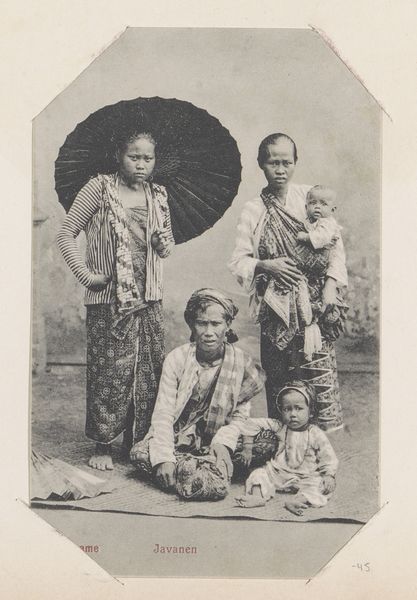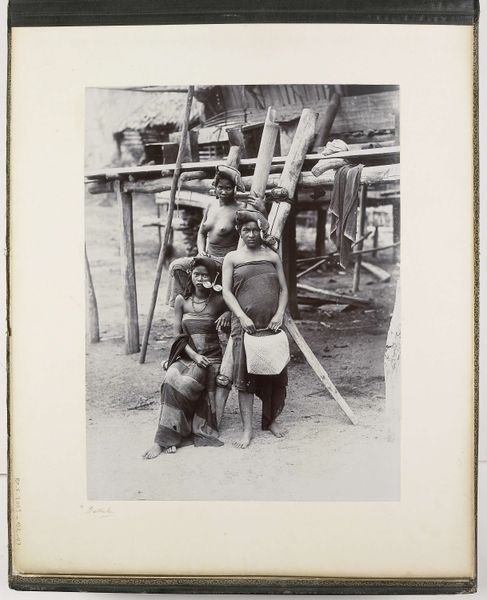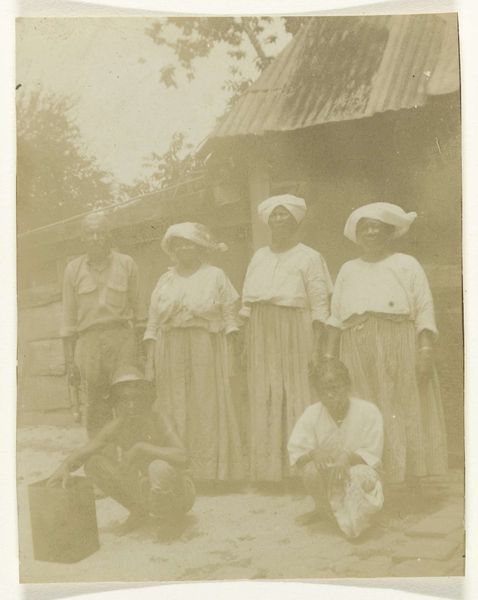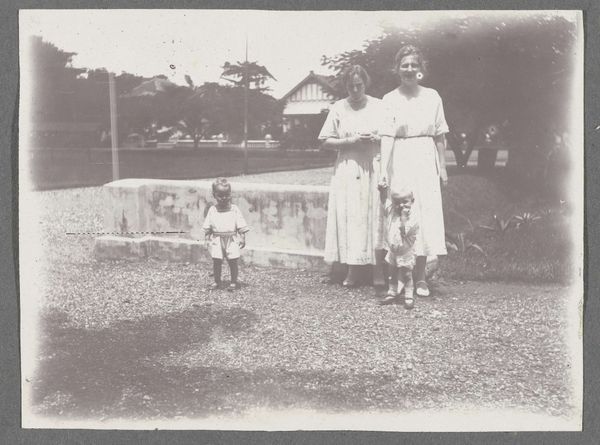
print, photography, collotype
#
portrait
#
print photography
# print
#
photography
#
collotype
#
realism
Dimensions: Image: 19.7 x 17 cm (7 3/4 x 6 11/16 in.) Mount: 28.7 x 23.1 cm (11 5/16 x 9 1/8 in.)
Copyright: Public Domain
Curator: This collotype print by Désiré Charnay, taken in 1863, is titled "Femmes Betsimisaraka, Madagascar". My initial reaction is that there is a striking formalism to it; these women are carefully positioned. Editor: Absolutely. I’m immediately drawn to the composition, but also to the ways this image performs colonialism. How do we, as viewers today, reckon with the context of a Western photographer traveling to Madagascar and creating an image that inevitably participates in a power dynamic? Curator: It’s an important point. Thinking about the collotype process, how the image is produced through light and a prepared glass plate, further complicates it. The choice of clothing for the subjects also signifies the constraints and negotiations happening between European expectation and indigenous practice. Editor: And the fabric itself—these beautiful patterns that might communicate important aspects of Betsimisaraka culture—become filtered through the colonial gaze. The framing and composition emphasize the Western notion of the ethnographic record, rather than celebrating indigenous agency. What was Charnay hoping to capture and for whom was it intended? Curator: Perhaps part of the value of an image like this is the material survival, giving insight into cloth production and dissemination routes, while simultaneously opening up questions of consumption and presentation. These garments provide hints about cultural exchange and availability of resources, too. Editor: Exactly. Understanding the print as a commodity, intended for a specific market, is key. Considering it not just as a document, but as an object of exchange allows us to critique the inherent inequalities embedded within that exchange. The image and the clothing tell an intertwined story of colonial ambition. Curator: Well, looking closely allows for awareness of cultural mixing in dress patterns. But also reminds us to interrogate the processes that led to the very existence of an image like this within a Western museum. Editor: Ultimately, engaging with this photograph asks us to consider the legacies of colonialism, reminding us that the act of viewing itself is a political act. Curator: Yes, looking at these "Femmes Betsimisaraka" is, more than anything, an exercise in being vigilant, sensitive, and alert. Editor: Precisely. There's so much complexity here, requiring layers of both historical and ethical awareness.
Comments
No comments
Be the first to comment and join the conversation on the ultimate creative platform.



